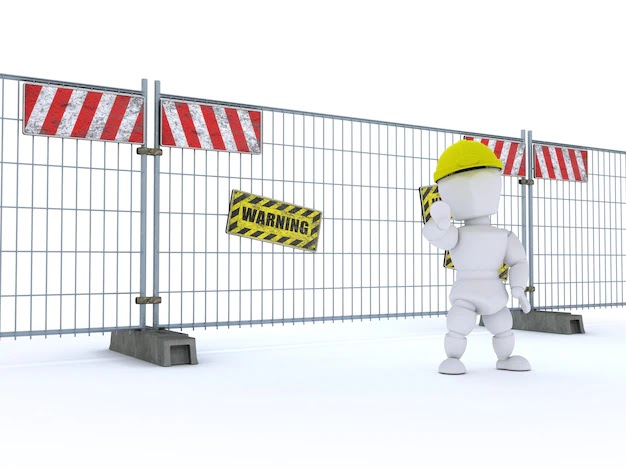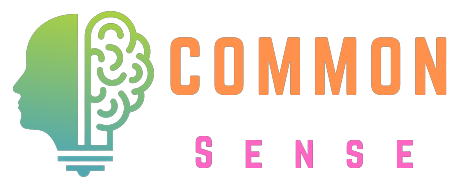
Creative Problem-Solving
I. Why Creative Problem-Solving Matters
1. Encourages Innovation: Creative solutions often lead to breakthroughs that set businesses and individuals apart from the competition.
2. Enhances Adaptability: In uncertain environments, thinking outside the box helps adapt to new challenges effectively.
3. Boosts Efficiency: Innovative ideas can streamline processes, saving time and resources.
4. Improves Collaboration: Teamwork often flourishes when members are encouraged to share unique perspectives.
II. Key Characteristics of Creative Problem-Solvers
Creative problem-solvers often display the following traits:
1. Curiosity: A relentless desire to ask “why” and “how.”
2. Open-mindedness: The ability to consider unconventional ideas without judgment.
3. Resilience: A willingness to try, fail, and learn from mistakes.
4. Empathy: Understanding others’ perspectives to develop well-rounded solutions.
1. Define the Problem Clearly: Creative solutions start with clarity. Break down the issue into manageable components. Instead of vague statements like, “The team isn’t productive,” define specifics such as, “Team productivity drops during afternoon hours.”
2. Change Your Perspective: Sometimes, looking at the problem from a different angle reveals hidden solutions. Techniques like role reversal—imagining yourself as a customer, competitor, or an outsider—can uncover fresh insights.
3. Embrace Brainstorming Sessions: Gather your team and encourage free-flowing ideas without criticism. Use tools like mind maps or idea boards to visualize connections between concepts. Quantity often leads to quality when brainstorming.
4. Combine Ideas: Some of the most creative solutions arise from merging seemingly unrelated concepts. This technique, known as conceptual blending, can produce innovative results.
5. Use Constraints as Catalysts: Instead of viewing limitations as obstacles, use them to fuel creativity. Constraints force you to think resourcefully and prioritize what truly matters.
6. Experiment and Prototype: Test your ideas on a small scale before committing to full implementation. Prototyping provides valuable feedback and reveals flaws early in the process.
7. Reflect and Refine: After testing, analyze what worked and what didn’t. Continuous improvement is key to mastering creative problem-solving.
1. SCAMPER: This acronym stands for Substitute, Combine, Adapt, Modify, Put to another use, Eliminate, and Rearrange. It’s a structured method for rethinking existing ideas and solutions.
2. Random Word Association: Pick a random word from a dictionary and find ways it connects to your problem. This technique helps break habitual thought patterns.
3. Reverse Thinking: Ask yourself: “What’s the opposite of what we want?” This method can reveal overlooked aspects of the problem and lead to innovative solutions.
4. Meditation and Mindfulness: A relaxed mind often generates the most creative ideas. Take short breaks to meditate or practice mindfulness to unlock your subconscious creativity.
5. Collaborate with Diverse Groups: Diversity fosters creativity. Working with individuals from various backgrounds and expertise can lead to unexpected ideas and solutions.
1. Fear of Failure: Many people shy away from creative approaches due to fear of making mistakes.
III. Steps to Cultivate Creative Problem-Solving
1. Define the Problem Clearly: Creative solutions start with clarity. Break down the issue into manageable components. Instead of vague statements like, “The team isn’t productive,” define specifics such as, “Team productivity drops during afternoon hours.”
2. Change Your Perspective: Sometimes, looking at the problem from a different angle reveals hidden solutions. Techniques like role reversal—imagining yourself as a customer, competitor, or an outsider—can uncover fresh insights.
3. Embrace Brainstorming Sessions: Gather your team and encourage free-flowing ideas without criticism. Use tools like mind maps or idea boards to visualize connections between concepts. Quantity often leads to quality when brainstorming.
4. Combine Ideas: Some of the most creative solutions arise from merging seemingly unrelated concepts. This technique, known as conceptual blending, can produce innovative results.
5. Use Constraints as Catalysts: Instead of viewing limitations as obstacles, use them to fuel creativity. Constraints force you to think resourcefully and prioritize what truly matters.
6. Experiment and Prototype: Test your ideas on a small scale before committing to full implementation. Prototyping provides valuable feedback and reveals flaws early in the process.
7. Reflect and Refine: After testing, analyze what worked and what didn’t. Continuous improvement is key to mastering creative problem-solving.
IV. Techniques to Spark Creativity
1. SCAMPER: This acronym stands for Substitute, Combine, Adapt, Modify, Put to another use, Eliminate, and Rearrange. It’s a structured method for rethinking existing ideas and solutions.
2. Random Word Association: Pick a random word from a dictionary and find ways it connects to your problem. This technique helps break habitual thought patterns.
3. Reverse Thinking: Ask yourself: “What’s the opposite of what we want?” This method can reveal overlooked aspects of the problem and lead to innovative solutions.
4. Meditation and Mindfulness: A relaxed mind often generates the most creative ideas. Take short breaks to meditate or practice mindfulness to unlock your subconscious creativity.
5. Collaborate with Diverse Groups: Diversity fosters creativity. Working with individuals from various backgrounds and expertise can lead to unexpected ideas and solutions.
V. Overcoming Barriers to Creative Thinking
1. Fear of Failure: Many people shy away from creative approaches due to fear of making mistakes.
Reframe failure as a learning opportunity.
2. Groupthink: In teams, dominant voices may overshadow unique ideas. Encourage equal participation and create a safe environment for sharing thoughts.
3. Time Constraints: Lack of time can stifle creativity. Allocate specific periods for brainstorming and innovation.
4. Rigid Thinking: Breaking habitual thought patterns is essential for creativity. Challenge assumptions regularly to foster fresh perspectives.
Technology can be an ally in thinking outside the box:
1. Collaboration Tools: Platforms like Trello, Slack, and Miro make it easier to brainstorm and manage ideas collectively.
VI. The Role of Technology in Creative Problem-Solving
Technology can be an ally in thinking outside the box:
1. Collaboration Tools: Platforms like Trello, Slack, and Miro make it easier to brainstorm and manage ideas collectively.
2. AI Assistance: Tools like Chat GPT can help generate ideas or analyze data.
3. Inspiration Resources: Online courses and tutorials on platforms like Coursera and YouTube can introduce new techniques for innovation.
1. Airbnb: Faced with initial struggles, Airbnb’s founders used creativity to attract users. They rented out air mattresses in their living room and marketed it as a unique lodging experience, eventually creating a multi-billion-dollar business.
2. NASA’s Apollo 13 Mission: When oxygen tanks exploded mid-mission, NASA engineers had to develop an improvised CO2 filter using only materials available onboard, exemplifying creative problem-solving under pressure.
3. LEGO’s Revival: LEGO embraced customer-driven creativity by introducing kits for creating stop-motion animations and launching digital building platforms, revitalizing its brand.
1. Foster a Growth Mindset: Promote the idea that abilities and intelligence can develop through effort and persistence.
VII. Examples of Creative Problem-Solving in Action
1. Airbnb: Faced with initial struggles, Airbnb’s founders used creativity to attract users. They rented out air mattresses in their living room and marketed it as a unique lodging experience, eventually creating a multi-billion-dollar business.
2. NASA’s Apollo 13 Mission: When oxygen tanks exploded mid-mission, NASA engineers had to develop an improvised CO2 filter using only materials available onboard, exemplifying creative problem-solving under pressure.
3. LEGO’s Revival: LEGO embraced customer-driven creativity by introducing kits for creating stop-motion animations and launching digital building platforms, revitalizing its brand.
VIII. How to Encourage Creative Problem-Solving in Teams
1. Foster a Growth Mindset: Promote the idea that abilities and intelligence can develop through effort and persistence.
2. Provide Psychological Safety: Ensure team members feel safe to share ideas without fear of judgment.
3. Incorporate Play: Activities like role-playing or gamified brainstorming sessions can make the process enjoyable and productive.
4. Celebrate Creativity: Recognize and reward innovative contributions to reinforce the behavior.

Creative problem-solving is more than just a skill; it’s a mindset that can transform the way you approach challenges. By embracing curiosity, thinking from different perspectives, and employing structured techniques, you can unlock innovative solutions to even the most complex problems. Whether tackling personal issues, work-related challenges, or global concerns, thinking outside the box can make a world of difference.
Start small, practice consistently, and watch your creativity flourish in every aspect of life.
Ques 1: What is creative problem-solving, and why is it important?
Ans: Creative problem-solving involves approaching challenges in unconventional and innovative ways. It’s important because it encourages innovation, enhances adaptability, and improves efficiency. Thinking outside the box helps individuals and teams develop unique solutions to complex problems, making them more competitive and resourceful in any environment.
Ques 2: What techniques can help me think outside the box?
Ans: Several techniques can foster creativity:
a) SCAMPER: Encourages rethinking ideas by substituting, combining, or modifying elements.
b) Brainstorming: Generates numerous ideas without judgment.
c) Random Word Association: Sparks connections through unrelated concepts.
d) Reverse Thinking: Explores the opposite of desired outcomes to uncover hidden solutions.
e) Diverse Collaboration: Involves working with individuals from varied backgrounds for fresh perspectives.
Ques 3: What are the common barriers to creative thinking?
Ans: The main obstacles include:
a) Fear of failure: Avoiding risks due to concern about mistakes.
b) Groupthink: Dominant voices stifling unique ideas in teams.
c) Rigid thinking: Habitual patterns that block new perspectives.
d) Time constraints: Lack of allocated time for innovation.
Ques 4: How can I cultivate creative problem-solving in my daily life?
Ans: Start by adopting a curious mindset and questioning the status quo. Use brainstorming tools, take breaks to refresh your mind, and seek inspiration from diverse sources. Practicing mindfulness and engaging with creative activities like journaling or drawing can also help.
Ques 5: How can teams foster an environment for creative problem-solving?
Ans: Teams can promote creativity by encouraging open dialogue, providing psychological safety, and recognizing innovative contributions. Incorporating activities like gamified brainstorming or collaborative challenges can make the process engaging and productive.

Conclusion
Creative problem-solving is more than just a skill; it’s a mindset that can transform the way you approach challenges. By embracing curiosity, thinking from different perspectives, and employing structured techniques, you can unlock innovative solutions to even the most complex problems. Whether tackling personal issues, work-related challenges, or global concerns, thinking outside the box can make a world of difference.
Start small, practice consistently, and watch your creativity flourish in every aspect of life.
FAQ
Ques 1: What is creative problem-solving, and why is it important?
Ans: Creative problem-solving involves approaching challenges in unconventional and innovative ways. It’s important because it encourages innovation, enhances adaptability, and improves efficiency. Thinking outside the box helps individuals and teams develop unique solutions to complex problems, making them more competitive and resourceful in any environment.
Ques 2: What techniques can help me think outside the box?
Ans: Several techniques can foster creativity:
a) SCAMPER: Encourages rethinking ideas by substituting, combining, or modifying elements.
b) Brainstorming: Generates numerous ideas without judgment.
c) Random Word Association: Sparks connections through unrelated concepts.
d) Reverse Thinking: Explores the opposite of desired outcomes to uncover hidden solutions.
e) Diverse Collaboration: Involves working with individuals from varied backgrounds for fresh perspectives.
Ques 3: What are the common barriers to creative thinking?
Ans: The main obstacles include:
a) Fear of failure: Avoiding risks due to concern about mistakes.
b) Groupthink: Dominant voices stifling unique ideas in teams.
c) Rigid thinking: Habitual patterns that block new perspectives.
d) Time constraints: Lack of allocated time for innovation.
Ques 4: How can I cultivate creative problem-solving in my daily life?
Ans: Start by adopting a curious mindset and questioning the status quo. Use brainstorming tools, take breaks to refresh your mind, and seek inspiration from diverse sources. Practicing mindfulness and engaging with creative activities like journaling or drawing can also help.
Ques 5: How can teams foster an environment for creative problem-solving?
Ans: Teams can promote creativity by encouraging open dialogue, providing psychological safety, and recognizing innovative contributions. Incorporating activities like gamified brainstorming or collaborative challenges can make the process engaging and productive.







Do Leave Your Comment